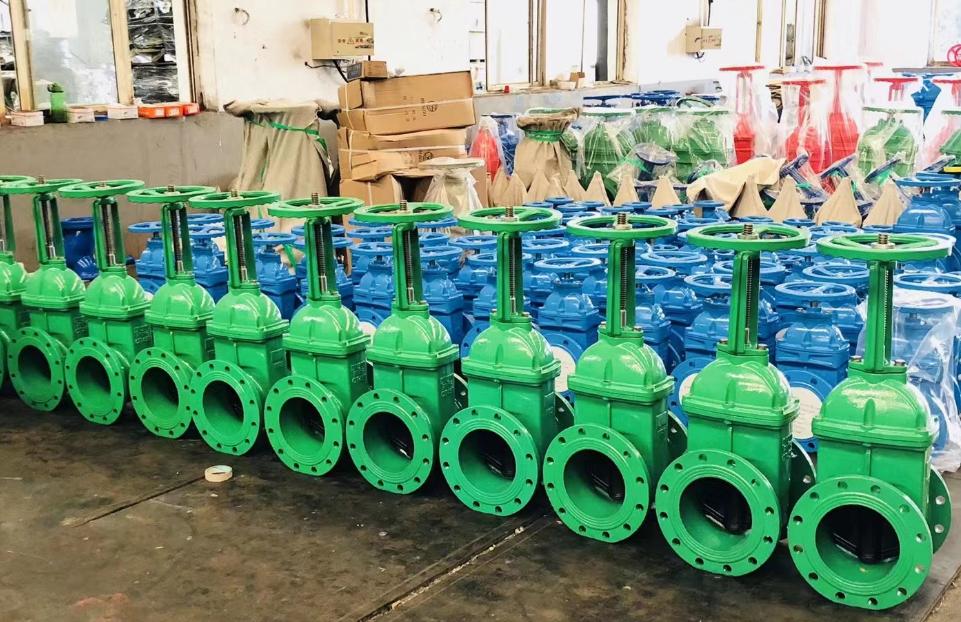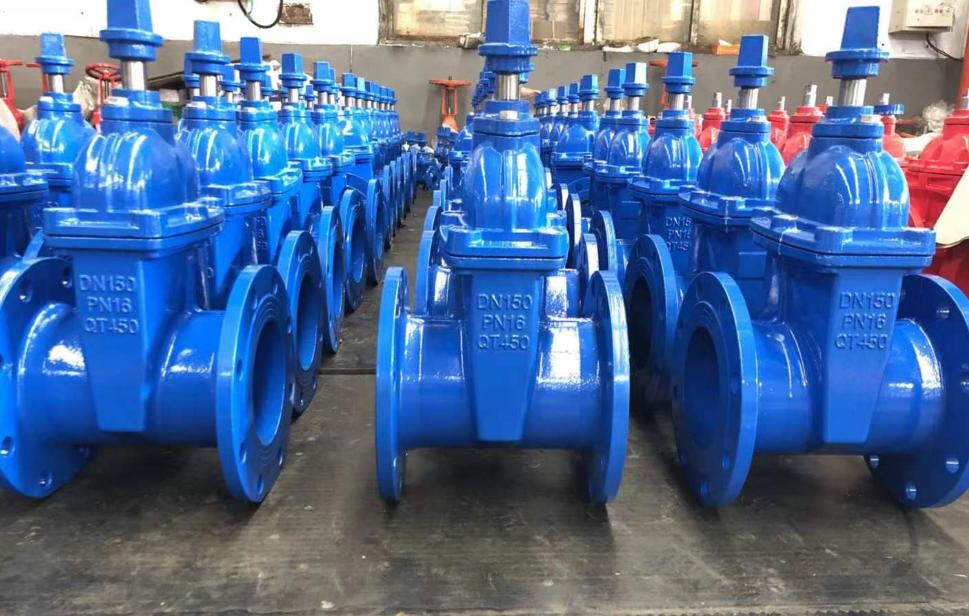What is the differences between rising stem gate valve and non-rising stem gate valve?
The gate valve is a gate that opens and closes. The movement direction of the gate is perpendicular to the direction of the fluid. The gate valve can only be fully opened or fully closed, and cannot be adjusted or throttled.
What is Rising stem valve?
Turn the handwheel to advance or retreat the threads of the handwheel and the valve stem, thereby raising or lowering the valve plate connected to the valve stem to achieve the opening and closing function.
The advantage of rising stem gate valve :
- The fluid resistance is small and the sealing surface is less eroded and corroded by the medium.
- Opening and closing is more labor-saving.
- The medium flow direction is not restricted, there is no flow disturbance and no pressure reduction.
- It has simple shape, short structure length, good manufacturing processability and wide application range.
The disadvantage of rising stem gate valve :
- Erosion and abrasion are easy to occur between the sealing surfaces, making maintenance difficult.
- The external dimensions are large, a certain amount of space is required to open it, and the opening and closing time is long.
- The structure is relatively complex.
What is Non-rising stem valve?
The concealed stem gate valve is also called the rotary stem gate valve (also called the concealed stem wedge gate valve). The stem nut is set on the gate plate. The handwheel rotates to drive the stem to rotate, which lifts the gate plate. Usually there is a trapezoidal thread at the bottom of the stem. Through the thread at the bottom of the valve and the guide groove on the valve disc, the rotary motion is converted into linear motion, that is, the operating torque is converted into operating thrust.
When the valve is opened, when the gate lift height is equal to 1:1 times the valve diameter, the fluid passage is completely unblocked, but this position cannot be monitored during operation. In actual use, the top of the valve stem is used as a mark, that is, the position where it cannot be opened, as its fully open position. In order to consider the locking phenomenon caused by temperature changes, it is usually opened to the top position, and then retracted 1/2~1 turn as the fully open position of the valve. Therefore, the fully open position of the valve is determined by the position of the gate (i.e. the stroke).
The advantage of non-rising stem valve
The height of the gate valve always remains unchanged, so the installation space is small, and it is suitable for gate valves with large diameters or limited installation space. This structure should be equipped with an opening and closing indicator to indicate the opening and closing degree.
The disadvantage non-rising stem valve
The valve stem thread is not only unable to be lubricated, but also directly exposed to medium erosion and is easily damaged.
Open rod VS Hidden rod
1. The screw cannot be seen in the concealed stem valve , but the screw can be seen in the exposed stem valve.
2. The lifting screw of the concealed-stem flange gate valve only rotates without moving up or down. Only a rod is exposed, and its nut is fixed on the gate plate. The gate plate is lifted by rotating the screw, and there is no visible door frame. The lifting screw of the rising-stem flange gate valve is exposed, and the nut is close to the handwheel and is fixed (does not rotate or move axially). The gate plate is lifted by rotating the screw. The screw and the gate plate only have relative rotational motion but no relative axial displacement, and the appearance is a door-shaped bracket.
3. When the concealed stem valve is opened or closed, the steering wheel and the valve stem are connected together and relatively immobile. It is through the rotation of the valve stem at a fixed point that the valve disc is driven to lift up and lower the gate to complete the opening and closing. The rising stem valve is to raise or lower the valve disc through the threaded transmission of the valve stem and the steering wheel. To put it simply, the rising stem valve is a valve disc that moves up and down together with the valve stem, and the steering wheel is always at a fixed point.







